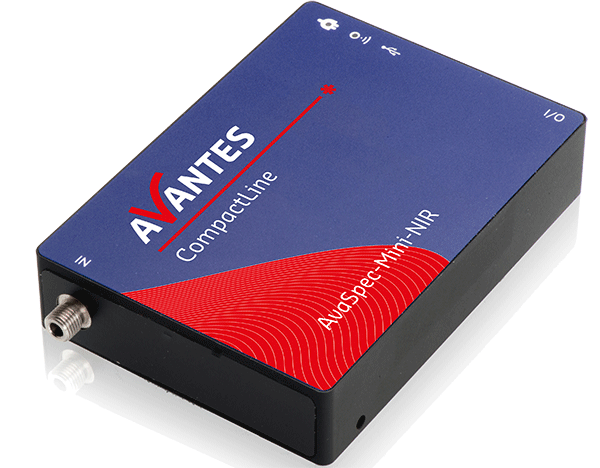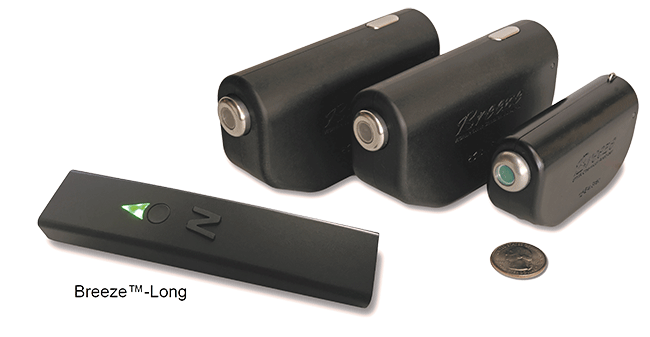|
Wednesday, February 12, 2020 |
|

|
|
|

|
February 2020
Spectroscopy Tech Pulse is a special edition newsletter from Photonics Media covering key developments in spectroscopy technology. Manage your Photonics Media membership at Photonics.com/subscribe.
|
|
|
Hyperspectral Remote Sensing, Field Spectrometry Monitor Environment
Spectroscopic measurements play a crucial role in several environmental applications and serve as one of the predominate techniques for remotely monitoring Earth’s surface. Spectroscopy makes it easier to identify raw materials as well as contaminants to determine the presence of molecular compounds, found in the water, on the ground, or in the air.
|
|
|
|
|
|
Raman Scattering Helps Ensure Safety of Stem Cell Therapies
A research team at Rutgers University has developed a biosensor technology that could benefit applications for the treatment of neurological disorders through stem cell therapy. The hybrid biosensing platform consists of an array of ultrathin graphene layers and gold nanostructures. This platform has been combined with Raman spectroscopy to detect genes and characterize different kinds of stem cells with greater reliability, selectivity, and sensitivity.
|
|
|
|
|
|
|
sponsor
|

|
|
 New: The AvaSpec-Mini-NIR Spectrometer
New: The AvaSpec-Mini-NIR Spectrometer
Avantes BV
The latest addition to our compact line: the AvaSpec-Mini-NIR! This compact, versatile near-infrared spectrometer is suitable for many different applications, including but not limited to food analysis and recycling. Though not as sensitive as our bigger NIR spectrometers, the loss in sensitivity is greatly compensated by its size and robustness, which makes this spectrometer extremely suitable for handheld applications. This spectrometer is based on a combination of our popular AvaSpec-NIR256-1.7 and Mini-series. Request Info Visit Website
|
|
|
 Breeze™ – the Smartest Palm Spectrometer
Breeze™ – the Smartest Palm Spectrometer
BaySpec Inc.
BaySpec extended the wavelength range of Breeze™. The world’s first smartest palm spectrometer for 400-1700 nm with a simple one button operation was recently upgraded to reach the long end of 2500 nm featured in the Short-Wave Infrared (SWIR) range. BaySpec is announcing the availability of Breeze™, which enables the device to operate at 1300 nm - 2500 nm. Featuring proprietary miniaturized optics, Breeze™ is highly efficient for maximum sensitivity with ultrafast acquisition. Request Info Visit Website
|
|
|
|
|
|
Spectrometer Measures Effects of Photon Momentum in Strong-Field Ionization
Physicists at Goethe University constructed a new, high-resolution spectrometer called super COLTRIMS because it further advances the COLTRIMS principle invented at the university. COLTRIMS, an acronym for COLd Target Recoil Ion Momentum Spectroscopy, consists of ionizing individual atoms and then precisely determining the momentum of the particles.
|
|
|
|
|
|
Raman Spectral Cytology Helps Diagnose Thyroid Cancer
If Raman spectroscopy can identify individual cells from various types of thyroid nodules based on unique differences in their spectra, Raman scattering could potentially be a new modality in cytopathology to improve thyroid cancer diagnosis. Researchers at the University of California, Davis set out to measure the effectiveness of this technique by performing a study using thyroid nodules with known diagnoses. These nodules were dissociated into single cells and prepared for single-cell Raman spectroscopy measurements.
|
|
|
|
|
|
Microresonator Measures and Images Nanoparticles with High Degree of Sensitivity
Scientists at the Okinawa Institute of Science and Technology Graduate University have developed a light-based device that can act as a biosensor, detecting biological substances in materials, such as pathogens in food. Microresonators are central to a new method for single-particle photothermal absorption spectroscopy, whereby the microresonators act as microscale thermometers to detect the heat dissipated by optically pumped, nanoscopic targets.
|
|
|
|
|
|
Scientists Develop Spectrometer to Detect Molecular Signatures
Scientists at the Laboratory for Attosecond Physics have developed a spectrometer for the analysis of the molecular composition of biological samples, capable of detecting minimal variations in the chemical makeup of organic systems. The research team built its device to capture spectra of infrared light, revealing the molecular signatures of precancerous and malignant cells that are often found in biological samples too small to detect.
|
|
|
|
|
|
LED Lighting for Fluorescence Microscopy: A Sustainable Illumination Option
Tue, Mar 10, 2020 10:00A EDT
This webinar will present the recent advancements in LED technology that have created an opportunity for LEDs to replace arc lamps for a variety of fluorescence imaging applications. Presenter Kavita Aswani, Ph.D., will address the development of high-power LEDs for the green excitation range, a wavelength that has traditionally been challenging for LEDs. She will also discuss the many advantages of using LEDs for microscopy systems in life sciences, including sustainability. Sponsored by CoolLED and Lambda Research Corporation.
|
|
|
|
|
 |
|